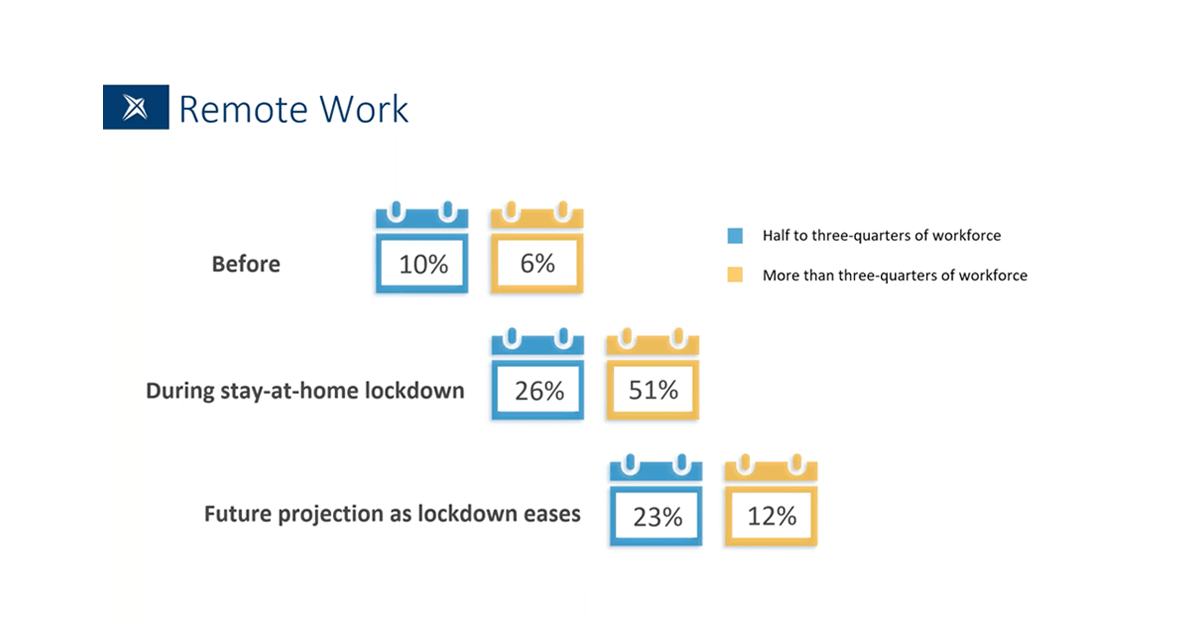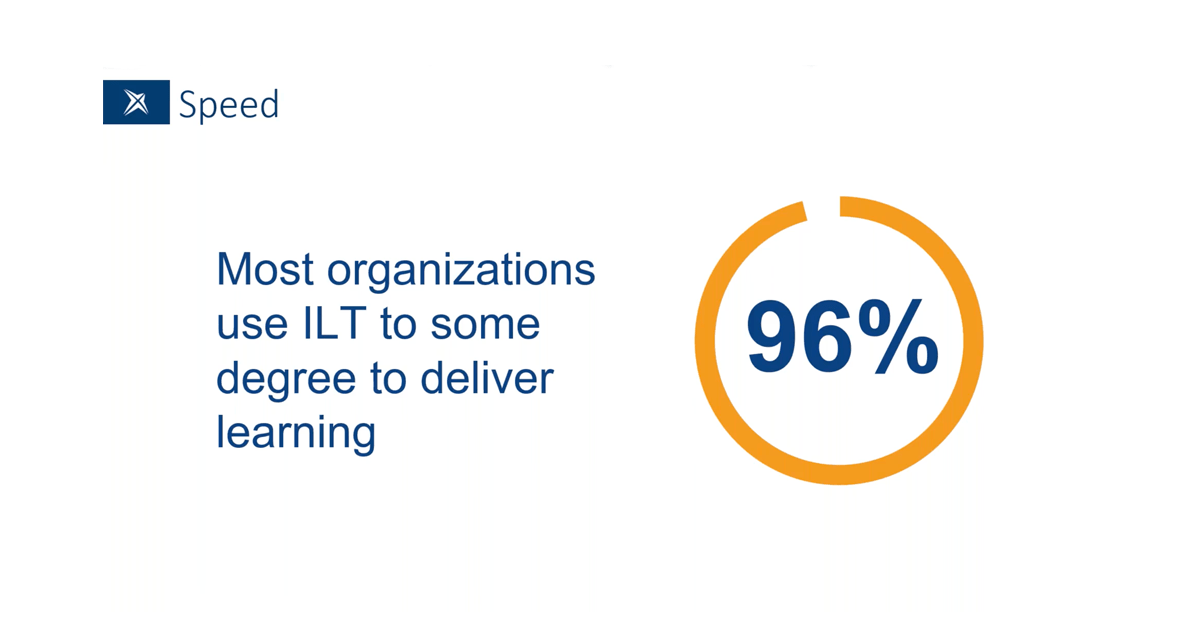A New Learning Experience is No Longer Nice to Have, It’s Essential

Seven months into a new world of work, learning has taken center stage at most organizations. Initiatives like on-demand learning, microlearning, or flexible content authoring have moved from the “we’ll get to it” list to the “do it now” list. And as companies move forward, the employee learning experience is definitely not going back to the way it was before the pandemic.
Remote Work is Here to Stay
Prior to COVID-19, the idea of employees working remotely wasn’t widely embraced. A study conducted by Brandon Hall Group in 2020 shows that only six percent of organizations had more than three-quarters of their employees working remotely. During the shelter-in-place, that number rose to 51% and organizations see that percentage dropping to about 23% in the future.

The new normal is that more people will continue working from home than at any other time, which means the amount of digital learning is not going to slow down post-pandemic. The good news is employees are ready to make more use of digital, on-demand learning but are organizations ready?
What Is Needed to Deliver a New Learning Experience?
We’ve seen that learning agility is critical to communicate and inform workers of fast-moving procedural and operational changes in response to the pandemic. And this need for agility is only going to intensify. The Brandon Hall Group cited that one of the biggest challenges organizations face on the road to this learning agility is adjusting business operations.
“Companies have always had to adjust operations due to competition or shifts in the market landscape, but this has typically come at a much slower pace than adjustments needed to deal with the pandemic. What we’ve seen is that our frame of reference with regard to learning and business agility has been fundamentally altered. In the future, there will be more change, and it will happen faster,” said David Wentworth, Principal Learning Analyst with Brandon Hall Group.
“In the future, there will be more change, and it will happen faster,” said David Wentworth, Principal Learning Analyst with Brandon Hall Group.
Agile Learning Looks Different Than a Band-Aid Approach
To deliver a modern learning experience that keeps up with this pace of change, organizations will need to do more than apply band-aids to their existing methods. The average company today has 22 different learning systems, which make it nearly impossible for learners to trust the content. Learning and knowledge are trapped in disparate locations, inaccessible, out-of-date, or not relevant.
“Typically organizations turn to the tools they already have and try to make those work. Inevitably, there is still confusion and uncertainty about what content is accurate and most up-to-date. Companies come to the point where they see it’s not getting better and they need something that is purpose-built,” said Wentworth.
Another staggering statistic is that 96% of companies use instructor-led training (ILT) to deliver learning. While in some industries this is unavoidable, the new paradigm with remote workers for the major of companies challenges this model.

To respond to the pandemic, many organizations took existing learning content and delivered it through webinars, conference calls, or virtual ILT. The problem is content for ILT is inherently different when experienced at a distance. The content for a modern learning environment needs to change with the delivery mechanism to be engaging for the learner.
Creating content in a wide variety of modalities and delivering it in a timely fashion is a top concern of many organizations today. The Brandon Hall Group notes that 60% of companies cite this as an important people function moving forward. Tools that are narrowly focused on authoring specific content in a certain way can’t address the issues facing learning organizations now where changes happen as often as daily or even hourly.
Moving Beyond Reaction to Transformation
Accessing what is needed that’s relevant to the task at hand when it’s needed is the learning experience today’s employees want: 88% of employees claim to learn and retain more by finding and using content on their own.
To deliver this, organizations will need to move beyond the reaction stage from the pandemic to transformation. They’ll need to embrace learning agility by converting mission-critical content to digital, make learning available anytime and anywhere, and ensure that it’s relevant to the learner.
